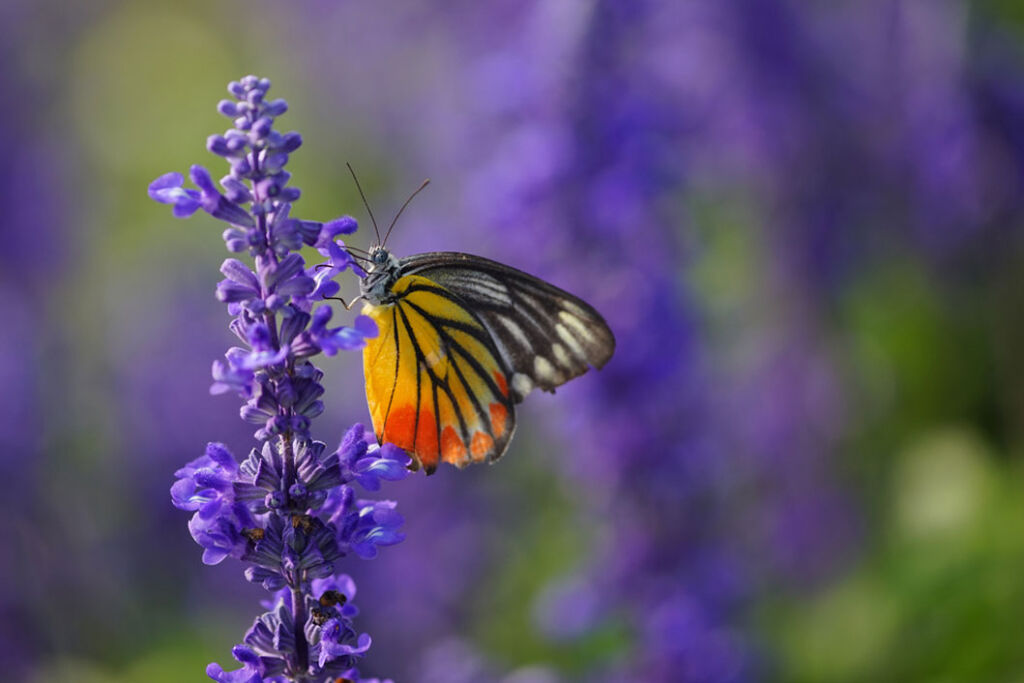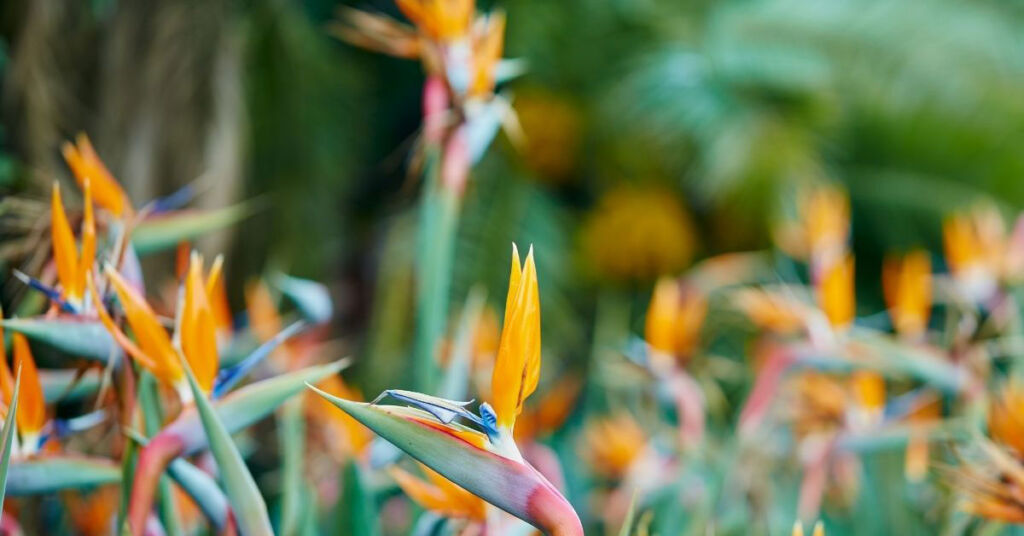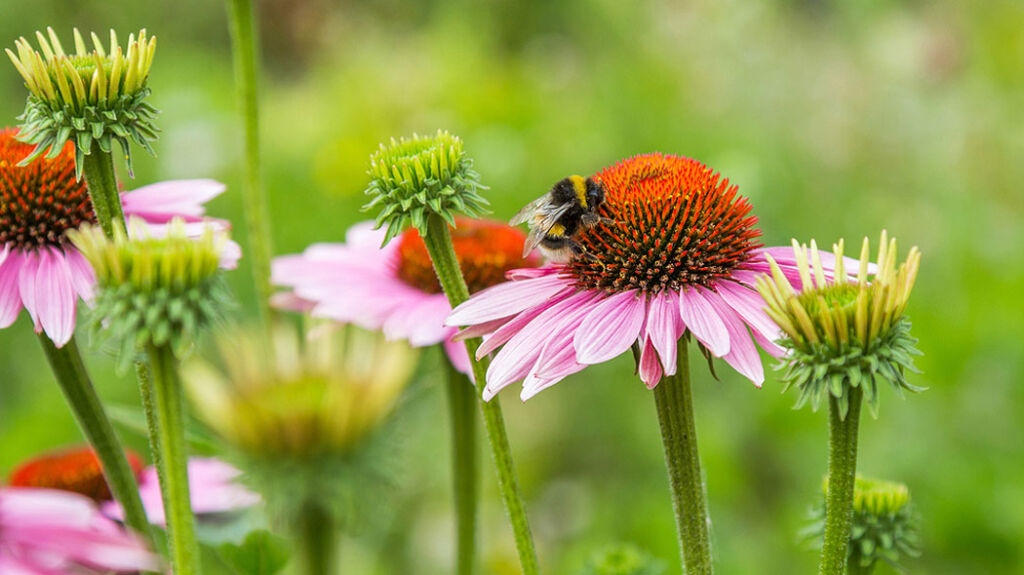
The weather might be a bit hit and miss at the moment. However, that’s not going to stop Brits from heading into their gardens to enjoy whatever the best of the British summer has to offer. In this gardening feature, we’re looking at ways you can still make your green space look the very best it can for the remainder of the summer.
Summer is regarded as one of the best gardening seasons for the average UK gardener, providing optimal conditions for many favoured green-thumbed activities. According to a survey by the British supermarket chain Waitrose, out of the top 15 summer activities, people are looking forward to, more than a third of them plan on having an outdoor afternoon tea or a BBQ, doing some sunbathing, and hosting a small gathering outside.

Whether you’re alone in the garden or with friends, being surrounded by colour and natural beauty will be the icing on the cake, and the good news is there’s still time and some clever ways to make your garden look splendid.

When it comes to making a garden look lovely, our go-to expert is Shannen Godwin from J. Parker’s, one of the leading online plants and bulbs retailers in the UK. She said, “Crafting the literal space to host a memorable summer, such as a beautiful garden, requires some delicate time management. In fact, some basic math skills are also required to nail the timing required by each plant, from planting to flowering, down to a science.
Generally, the most favourable planting window opens in April, allowing for just enough time not to be late to the planting season. But general guidelines can always be stretched a little further to accommodate even late-blooming gardeners.”
Getting the seeds into the ground at the right time to ensure a beautiful garden to look at can be a breeze with the right expert tips. Here are a few to help you to get your garden looking great before the summers out.
Time to find out what your flower type is
Exactly when a summer flowering plant should be planted depends on the type of flower it is. Generally, we have perennial flowers, bulbs, and annual flowers.
Planting Perennials
As a rule of thumb, perennials should be planted in spring because some seeds require a period of cold temperature before they start germinating – also a time-consuming process. Most perennials take around three to four weeks to germinate.
In the case of mature perennials, a transplant over fall will be needed. For example, impatient flower lovers that wish to add a quick splash of colour to their garden in the summer, such as with a mature perennial purchased at a nursery, will need to provide it with time to settle – much like in the case of people changing environments. Ideally, this should be done six weeks before the first fall frost, so the plant has some time before winter.
Bulbs
Bulbs are thanks to their ability to liven up any garden, and they are classified into spring-flowering bulbs and summer-flowering ones. The summer flowering bulbs, in particular, should be planted when the soil is still warm and mulched, which is a few weeks after the last frost. This is because summer flowering bulbs are not hardy enough to survive outdoors in low temperatures. However, a few hardy exceptions, such as daylilies, flower in the summer and can still be planted in the spring or Autumn.
Annual flowers
Annual flowers sprout, grow, bloom, and go to seed in one season and one season only, making the maths behind growing from seed to summer flowering plants rather easy. They generally take six to eight weeks to grow into a transplantable size, with a few variants taking slightly longer. For this reason, reading the backside of seed packets is essential to know the exact period each variant will take.
Despite differences in germination periods, annual flowers are normally transplanted to the garden after the last spring frost. You only need to make sure you’ve hardened them off before you take them outside.

Take note of the maturation date for each
Knowing whether you’re too late to plant a summer flowering plant involves knowing exactly how long the plant takes to mature and calculating whether that’s longer than the time left to grow and harvest. This information can usually be found on the back of the seeds’ packet for each plant. There is a general guideline per type of flower that can be followed, however.
Annuals
Speedy annuals such as take Although most annuals take anywhere between six to eight weeks to grow and finally go out, there are some speedy ones that take three to four weeks to reach a size fit for transplanting. Popular examples of speedy annuals are morning glories and sunflowers, while some of the regular kinds include Ageratum and Asters. Slower variants also exist, such as petunias and snapdragons, which take eight to 10 weeks to fully germinate.
Hardier Perennials
On average, most perennials, like the Gaillardia, Coreopsis, and thyme, reach maturity in eight to 10 weeks. Hardier perennials only require one to two weeks before they can be transplanted into the garden to continue their growth. Daisies, Dianthus, and Delphiniums, on the other hand, need 10 to 12 weeks before they become mature, but they can also be moved one to two weeks before the first frost-free date. Foxglove, Asclepias, phlox, and Heliopsis share the same maturing period but have a longer wait time, as they can only be transplanted after the last frost date.
Plants with more flexible timelines
If for any reason, the deadlines to start planting flowers in time for a beautiful summer garden could not be met, then the following plants are the best emergency plan, as they can still blossom nicely for a great summer pop.
Sedum Autumn Joy
The Autumn Joy is a summer-blooming plant that forms tiny, rosy-red flowers when mature. This late summer bloomer can grow up to a height of two feet with fleshy, succulent leaves. Their buds first appear pink before turning to red as they open, and finally to a coppery shade at the end of their lifespan.
Balloon flower
The balloon flower, also known as Platycodon Grandiflorus, is a clump-forming perennial that adds a vibrant display of colour to your summer garden. A mature balloon flower plant grows up to two and a half feet tall, with young buds swelling like balloons – a hint for the name. The buds eventually burst open into bell-shaped flowers, which can be a shade of blue, white, or pale pink.
Black-Eyed Susan
Otherwise known as Rudbeckia hirta, the Black-Eyed Susan is a cheerful-looking wildflower known for its daisy-like flowers that come in shades of orange, sunshine yellow, or red. The floret petals are anchored onto a chocolate-brown centre disk, making it almost obvious that they grow best in a full-sun location. They also happen to be drought-resistant, deer-resistant, and attractive to butterflies and small songbirds in the fall.

It’s never too late to start preparing for the summer
Sometimes the amount of preparation required, even by hobbies, can be overwhelming. However, with the right guidance, anyone can prepare something special for this year while allowing for the time and knowledge for something even grander to be planned for the next one.
Read more gardening guides here.
![]()




You must be logged in to post a comment.